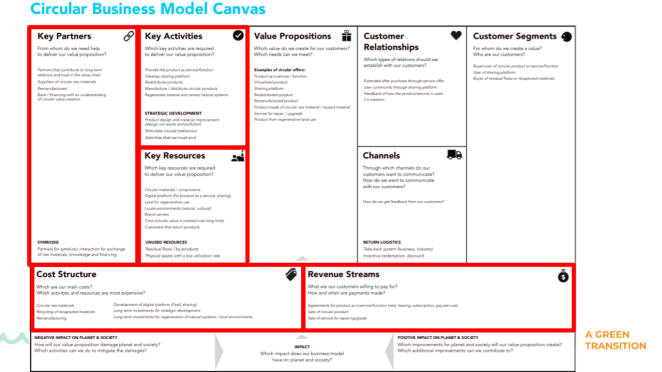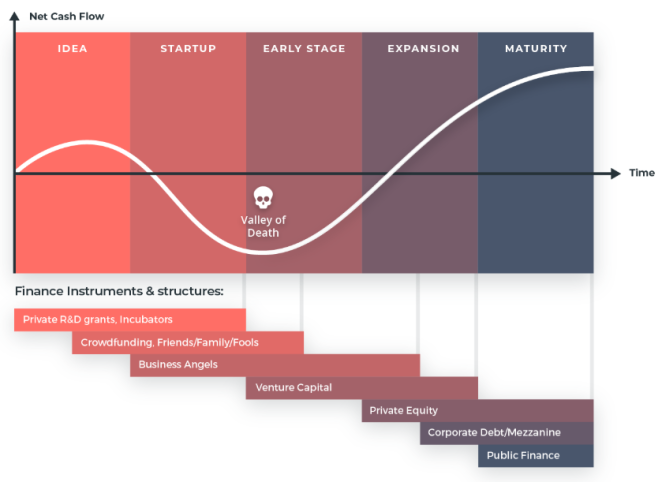As we near the conclusion of our Circular Business Camp, we've explored various topics including agile business development, customer segments, circular economy principles, effective communication, pitching techniques, and the utilization of appropriate tools for developing circular business models. Now, it's crucial to shift our focus to the practical aspects of the Circular Business Model Canvas. We'll examine how to deliver our value proposition (whether it be a product or service) to our customers, outline the necessary activities to fulfill this proposition, and explore strategies for securing funding to support our delivery efforts.

The left side of the CBMC
We have now gone through the entire Circular Business Model Canvas and during this workshop we focused on the left side of the CBMC, which is Key Activities, Key Resources, Financing & Funding (cost structure and revenue streams), Key partners.
During the Key Activites part we focused on; Which key activities are required to deliver the value proposition?
- Provide the product as service/function
- Develop sharing platform
- Redistribute products
- Manufacture / distribute circular products
- Regenerate (restore and renew) natural systems
We moved on to Key Resources where we talked about: Which key resources are required to deliver our value proposition?
- Circular materials / components
- Digital platform (for product as a service, sharing)
- Land for regenerative use
- Local environments (natural, cultural)
- Brand carriers
- Time (circular value is created over long time)
- Customers that return products
3 types of financing
A big part of the problem description of the target group was to learn about different financing options in the different countries and how this works. It's important to differentiate the types of financing:
Participation (Equity)
- capital is provided in exchange for a participation in the company (part of the ownership)
- Participation is therefore a form of equity
Loans (debt)
- Debt financing is provided in the form of a loan that is repaid in instalments or in full, including
- examples:
- crowdfunding
- leasing finance
- impact loans
Public funding
- various policy instruments that can (financially) support the transition to the circular economy.
- indirect financing:
- fiscal instruments / subsidies / purchasing policy
- direct financing:
- guantees / loans / participation

The right funding at the right time
Typically, most funding challenges arise during the initial stages of a company's journey due to the high levels of uncertainty involved. In the conception and start-up phase, the primary concern is technological risk: the uncertainty surrounding the feasibility of the product or idea. Once the company validates its technology, it progresses to the commercialization phase where market risk becomes prominent: the uncertainty of meeting market demand. This risk is most prevalent during the early start-up and initial expansion phases. Subsequently, during the expansion and maturity phases, execution risk emerges as the company endeavors to scale up. Each phase presents unique risk profiles, necessitating tailored financial instruments.
Different financial risk of circular business
- Financial flows that change
- Longer payback period, more working capital needed but also more collateral available
- Longer payback period, more working capital needed but also more collateral available
- Dependence that increases
- impact if one partner unable to supply?
- dependency on customers (can they pay longer for the service? do they take care of the product?)
- risks that become more complex
- pioneering + increased dependency -> accounting and legal challenges/costs
Due to a lack of understanding financieers might see a circular business as more risky
